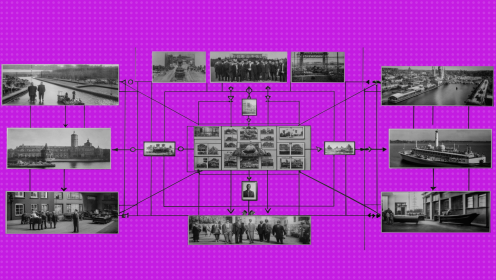In one of the previous articles, I started talking about project management and started with the very basics: what is the work on the project, who is involved in this work and so on. It's time to move on and dive into the key stage of project management - planning.
This article is for beginners in project management.
What is a project plan and why is it needed
The plan is not technical tasks for employees (although it is included in the plan), but organization and control. It is unlikely to achieve much if it is not clear who is responsible for what task, what difficulties are to be overcome, and most importantly - why.
When developing a project plan, you determine the goals and participants (including contractors), assign tasks, and plan a schedule for their implementation. We will have to do all this at once, "on the shore" — in the course of work, the plan will inevitably have to be adjusted. So there must be a plan.
In short, the plan is needed to work on the project, was ordered and did not suffer from pitfalls. When each team member knows what needs to be done and by what day, you will be able to avoid unnecessary fuss (or at least reduce it to a safe level) and not forget about anything. And it's much easier to control everyone.
How to make a plan
Identify goals and participants
The first thing to do is to think carefully (individually or with colleagues) about what the project is. To understand, you need answers to the following questions:
- Why do I need this project? How will it benefit [the company/participants/consumer]?
- How will the customer determine the success of the project?
- What should be the final result?
When it becomes clear what kind of work is going to be done, figure out who is involved in the project. At a minimum: you are the project manager and the customer. But there will almost certainly be a bunch more specialists. Your next task is to find out who it is.
Perform a decomposition of works
To create a project plan, you need to break down the project into smaller and more controlled work, the implementation of which will achieve the desired result. This process is called structural (or hierarchical) decomposition of work.

At the same time, you will understand how much work do you have.
When you have a list of tasks for specialists on hand...
Assign responsibilities
I'm not going to teach you how to choose performers for tasks right now — this is a topic for a separate article. And I'm sure you can do it without me. So let's talk about something else.
In large projects, it is normal for several people to do the same task. Your job as a project manager is to distribute their areas of responsibility so that they don't drag the task in different directions.
There are three main categories of employees:
- —directly performers who will do the task;
- —those who determine how to get the job done;
- —those who control the process and the result.
If there are two specialists who prefer a different approach, they should either be divided into different tasks, or one of them (less experienced and cheaper) should be restricted in management rights. The last thing you need is for them to argue about how to do this task instead of working.
It is best to create a table with a list of project participants, their responsibilities and rights. Don't forget to show it to everyone, so there won't be any misunderstandings.
| Process | Peter Kopeikin | Lena Streltsova | Andrey Mishin |
|---|---|---|---|
| Managing the design Department | Resp. | Inf. | Inf. |
| Logo creation | Resp. | Part. | Inf. |
| The design layout of the website | Inf. | Resp. | Part. |
| Presentation | Part. | Inf. | Resp. |
(Resp. - responsible for the task. Part. — participates in the execution of the task. Inf. - gets information about the task)
Do not try to put more responsibilities on the project participants than they can physically pull - otherwise the deadlines will burn out, the tasks will be done somehow, and you will end up to blame.
Draw up and agree on technical task
There is a list of tasks. There are performers. Now you need to describe the technical tasks in as much detail as possible and coordinate them with all of them.
Usually TT for each task is made immediately after decomposition, when all the tasks are clear. But I believe that it is much more useful to draw up the TT together with the direct performer. Preferably, through the understanding of the problem. Then there will be no questions in the course of work — neither you, nor the performer, nor the customer. Especially a lot of problems may arise with the latter — either at this stage, or already in the midst of work, new wishlist requests may arrive from the customer:
«Let's also do this. And this. And this, I like it a lot!»
The main thing here is to stop the customer in time. Otherwise, the project will continue to grow, you will discuss and discuss it, and when you finally start working, you will go crazy to implement all this good. It is also not necessary to cut off all the additional wishes of the customer - everyone must compromise.
Make a schedule
To clearly understand when tasks need to be done, what tasks can be done in parallel, when intermediate results should be ready, and so on, you need to spread the tasks along the timeline. Perhaps the most obvious and popular option is to draw a Gantt chart.
To make a Gantt chart:
- 1. arrange the tasks in order;
- 2. determining their dependence on each other (perhaps some things can be done in parallel);
- 3. ask the performer how long it will take to complete the task (of course, with a margin);
- 4. distribute time for tasks on working days, trying to meet the deadline.
Of course, the Gantt chart is not very flexible. It is enough for one specialist to fail the deadline, the entire chart will start to move out and fall apart, and you will have to constantly adjust it. But, probably, its visibility is worth it.
Identify possible problems and risks
Problems can arise at any stage of the work, and it is better to prepare for them. You may not be able to finish your work on time:
- 1. Incorrectly estimated time. To reduce the risk of this problem, try to make a schedule with a margin of time.
- 2. Poorly formulated requirements. The customer can approve the project without looking, and then in the middle it suddenly turns out that he had absolutely the wrong thing in mind. So it's better to coordinate everything several times.
- 3. New tasks or changes to them.
- 4. Incorrectly assigned roles. It may suddenly turn out that one of your performers is not as good as you thought. And after his participation, you will have to redo everything that he did. Unfortunately, it happens.
- 5. The reduction in the budget of the project.
All these problems can occur even if you were extremely careful at each stage. Just be prepared and think in advance how you will get out of these situations.
It was possible to make a project plan, it's not the time to relax. Now you will have to monitor the team's work and check whether everything is going according to schedule. To do this, you can make short calls or meetings with the team (every day, once a week, or otherwise, depending on the time frame). Even if you trust your team.
But, despite all the large-scale preparation for the project, everything is likely to go wrong. No project goes smoothly. Just remember that and be ready.

















